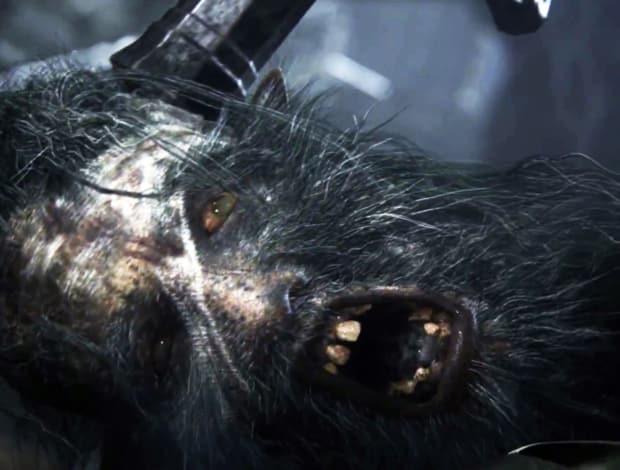On your first prowl through the vertiginous streets of Yharnam, you’ll walk linear paths that lead exactly where you need to go and little place else, discover impossibly convenient shortcuts unlocked by impossibly inconvenient doors, and if you’re uninitiated in Soulsborne etiquette, maybe even fall down a few open elevator shafts.
Indeed, it’s clear from the outset that Yharnam is a city of frustrating impracticalities and incredible coincidences.
Such level design may make for a rewarding experience and belie a sense of open world exploration, but it can also make Bloodborne’ssetting feel unduly contrived.
Spend a bit of time digging into the lore of this unlikely city, however, and you’ll discover that its one-way doors and serendipitous shortcuts make perfect sense within the Lovecraftian narrative.
In the beginning you awaken in Iosefka’s Clinic, one of Yharnam’s notorious practices where any sickness can be cured through imbibing a miraculous kind of blood. “Seek paleblood to transcend the hunt,” you’re told. It’s not much to go on, but it’s enough to get you out the door and killing some beasts.
Even for an outsider come to Yharnam for the first time, hunting beasts is natural; as the legendary hunter Gehrman says, “it’s just what hunters do!”
Improbably, the immediate route away from this surely very busy clinic, in this city inhabited by perhaps millions, is up a ladder that would give Big Boss case to pause.
From there you follow a series of winding streets where disquieting statues crowd the pavements, coffins wrapped in chains lie unattended, and gravestones planted in the ground block doorways.
Underfoot, gastrous crows drag themselves across the cobbles on bodies too bloated for their legs to support; while overhead the sky burns bright orange, seemingly immolated by one of the many lycanthropic hunters patrolling the streets to come.
Straight away this depiction of Yharnam, an ostensibly functional city, doesn’t quite make sense: the eldritch truth that is hinted at throughout the game’s opening hours remains elusive.
With the player’s arrival at Byrgenwerth, the school from which the infamous Healing Church originated, we see a different side to Bloodborne’s lore. One in which dreams exist as alternate realities and tentacular monsters go bump in the night.
Where the lore of its predecessors was impenetrably dense from the get go, Bloodborne’s story is a beguiling mystery that twists and turns into the arcane netherworld like all good cosmicism does.
At the outset, it reveals just enough to draw the player in so that when the tone veers to the left, when the blood moon hangs low and the creeping horror of what is really happening in this all too literal nightmare rears its head, the player isn’t alienated. They are, in fact, more likely to rummage for clues in the descriptions of their inventory.
And therein lies the truth. The Foreign Set, the attire the player starts the game with, reads: “Clothing worn upon awakening to the nightmare of blood and beasts.”
Miyazaki is notorious for writing in a way that allows for multiple interpretations and the hitherto nightmare may simply be a metaphor for the hellish state we’ve found Yharnam in.
Having the insight to realise that dreams can exist as physical dimensions, however, it’s entirely possible, even likely, that we were never in the real version of Yharnam in the first place, but someone’s nightmare of it; a nightmare in which the city’s erratic geography and macabre streets make a kind of surreal sense.
In essence, by setting Bloodborne entirely within one grand nightmare, FromSoftware were able to do all the level design trickery that makes exploring their games so enjoyable and rewarding without having to compromise on the cohesiveness of the narrative or believably of the world.
What makes for a fun game and a good story are often two very contentious and disparate aspects of modern game design. Within the dreamworld of Bloodborne, however, we see them in bed together.
What do you think of Bloodborne‘s lore? Let me know in the comments below.

